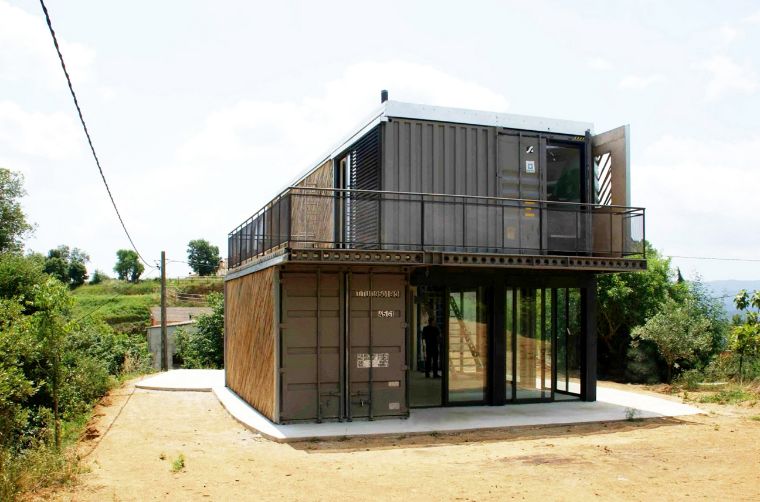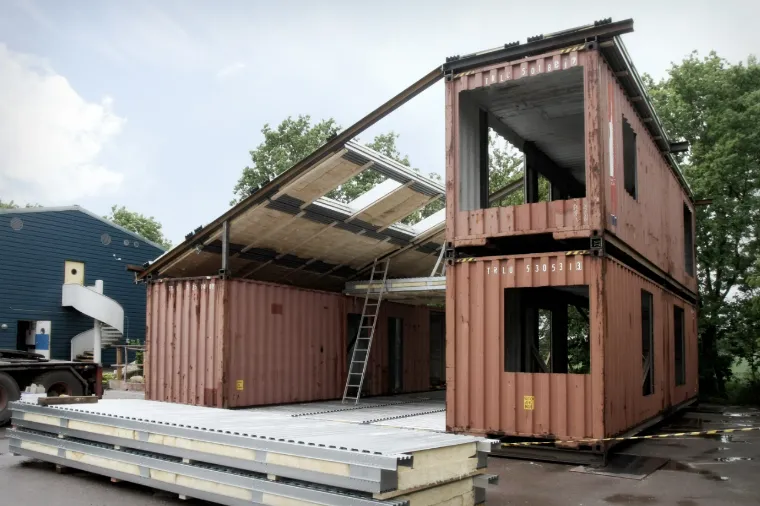Shipping container homes have become increasingly popular around the world as an easy and cost-effective way to provide prefab housing. Container home modification is very trendy not only because of its beautiful and amazing designs but also because they provide an efficient and superior green solution for sustainable living and business. But are they completely safe? Read more to discover the answers to all these questions!
Recycled Container Homes A Risky & Toxic Choice

Does a container home contain harmful chemicals?
The most common safety question people ask is do the shipping containers contain toxic chemicals? Many of these concerns stem from a well-written article by Brian Pagnotta at Arch Daily on the pros and cons of living in a shipping container home.
The two major concerns
1. The wooden floors used in the majority of shipping containers are treated with hazardous chemicals such as pesticides
2. Some shipping containers are coated with paint that contains hazardous chemicals such as phosphorus and chromate.
These hazardous chemicals can pose a health risk to occupants of contaminated containers. In order to eliminate these risks, many containers converted into residential shelters use either new containers that are not treated or coated with hazardous paints or used containers with a well-known history that has not been used for handling toxic substances.
For used containers, you can apply a non-breathable underlayment of flooring to protect against harmful chemicals sprayed on the wooden floor. Then place tiles over the underlayment as the new flooring. It is also possible to completely remove the original wooden floor and replace it with marine plywood
Building a brand new container house?
If you buy and build your house with new shipping containers and order them directly from Asia, you don’t have to worry about these issues. You can simply ask the manufacturer not to treat floors or coat shipping containers with hazardous paints. However, using brand new shipping containers to build your home increases the cost. It also reduces any environmental benefits you might get from building with used shipping containers.
5 reasons why a container home does not prove to be the best alternative housing choice
Energy efficiency
As we all know, metal is a conductor – hence the popularity of metal frying pans over wooden pans, for example. Metal is thus a less-than-ideal substance in many home building applications. In order for the container house to be energy efficient even in a cold climate, it must be insulated on the outside, and possibly on the inside.

To obtain a minimum of energy efficiency, an additional structure must be built for the insulation, and an installation must be made for exterior cladding. As an option, you can place all your insulation inside, but to have enough of it, you would have to significantly reduce the usable interior space.
One option is spray foam, in which case choose CFC-free spray foam options for green building.
The cost
A container house does not automatically mean cheap construction. The cost of framing and insulation, and because the technical issues are rather complex (drilling holes, managing junctions, electrical connections, etc.), converting a shipping container into a house can indeed turn out to be more expensive.
With the potential need to build another entire structure inside or outside the shipping container, the metal itself is reduced to being little more than a finished interior surface or serving as steam, where he doesn’t necessarily do such a good job anyway. Using old containers for the start of the construction project uses huge amounts of metal that could be much more useful in other applications.
Recyclability
Metal is infinitely recyclable. Indeed, the monetary value of an old container alone guarantees that it will be recycled in one way or another. The manufacture and extraction of metal are polluting and consume a lot of energy, so it is important to make good use of it. When used to form a structure, the carbon footprint and embodied energy of metal is significantly worse than that of wood. From the point of view of green building materials, materials should be used as intelligently as possible, which means that it would be better to keep the metal in circulation.







Leave a Comment
You must be logged in to post a comment.